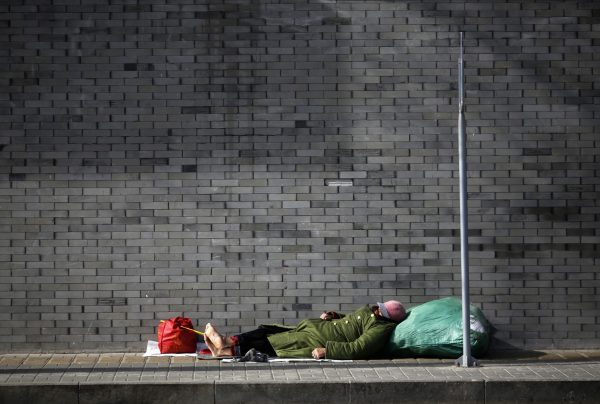In 2013, Yang’s family had been granted financial assistance, known as dibao, after the local village committee paid her a visit. Yet the next year, her family’s name was removed from the list of recipients because the committee believed that the Yang family’s annual income exceeded the national poverty line. In 2015, the village committee decided to select recipients based on nominations from fellow villagers. But because no villager nominated Yang’s family the money was allocated to other families, some of whom were better off than hers.
Yang’s tragedy came four years after the Chinese Communist Party’s 18th Congress in 2012. That meeting not only marked Xi Jinping’s rise to the height of power; it also introduced the party’s two Centenary Goals, the first of which refers to establishing a ‘moderately prosperous society’ by 2021 — the centenary anniversary of the CCP’s founding.
Poverty reduction is a key element to achieving this goal. The Chinese government is committed to eliminating rural poverty by 2020, and has pledged to pull at least 10 million people out of rural poverty each year from 2016.
Based on China’s official poverty line of 2300 renminbi (US$333) per year, the number of rural poor fell from 555 million in 1995 to 56 million in 2015. In 2016, the government claimed it had reduced the impoverished rural population by 12 million, exceeding the original per annum target.
Despite the shrinking number of rural poor, China is still facing a smaller yet tougher poverty problem. For decades, the Chinese government has relied on economic growth to boost incomes. But those still impoverished are below the poverty line because of health issues and China’s more gradual economic growth rate. This indicates that China has entered a late and crucial stage of poverty elimination in which it must reform its social assistance system.
The main form of social assistance to the poor in China, the dibao system, is a minimum living standard guarantee program that targets poor households below a certain income and transfers money to those that qualify. While it is a national program, dibao implementation remains decentralised as eligibility thresholds and recipient selection are all determined by local governments.
The number of people receiving dibao dropped from 2011–2015. Yet in 2015, a World Bank report found that from 2007–2009, around 90 per cent of rural individuals with annual income below the local threshold did not receive dibao. This echoed a report on five provinces published by two scholars at Beijing Normal University which found that in 2010–2011, over 80 per cent of households that fell below the national poverty line did not receive dibao.
These studies highlight a substantial problem within the dibao system. The selection of recipients is often arbitrary and typically delegated to local village committees that lack consistent selection criteria — as in Yang’s case.
A retired professor from Sun Yat-sen University calculated that when per capita net income was used to assess the Yang family’s financial situation, each member was living on less than 3 renminbi (US$0.43) a day. And this was on top of Yang raising four young children and supporting the family elders alone during most of the year.
Yang’s situation reveals the inadequacy of measuring poverty based on the line drawn solely by income, as well as the unsystematic approach to selecting dibao recipients and the lack of long-term support for poor households, all of which contribute to persistent, extreme financial difficulty.
Poverty alleviation measures like China’s dibao system are ultimately only emergency mechanisms — they cannot solve the fundamental problems underlying such dramatic inequality. Combined with reforms to the existing dibao system, such as tightening oversight of local bureaucracies, the Chinese government should also move away from its obsession with using overly simplistic figures to measure poverty reduction. It must provide more tailored poverty relief measures on a case by case basis. Some local governments are already there, reportedly targeting poor individuals with health issues. But much more needs to be done to overcome the current attitude that jump-starting economic growth in less-developed areas will ultimately be sufficient to end poverty.
Given its existing progress, the Chinese Communist Party may be able to achieve its poverty reduction goal in terms of its citizens’ annual incomes. But hitting this target will be meaningless if even basic aid to families who do manage to climb above the poverty line can be withdrawn without warning. Without substantial effort, cases like Yang’s will continue well after 2020.
Francesca Chiu is a research assistant at the Department of Politics and Public Administration, University of Hong Kong.


China’s economy is dependent on the West for demand for its products. It does not have a tech edge over the West. So, the demand remains only while rates are low. Excess capacity already started killing Chinese industry and the realty sector as an effect. OBOR projects are the only saving grace for Chinese economy. But then India almost shot it down; so its future is uncertain. China will surely be able to feed its population but not take them out of poverty. The labour force is too large with impending unemployment with contracting demand. A few rich as a result of corruption and business do not reflect the society.